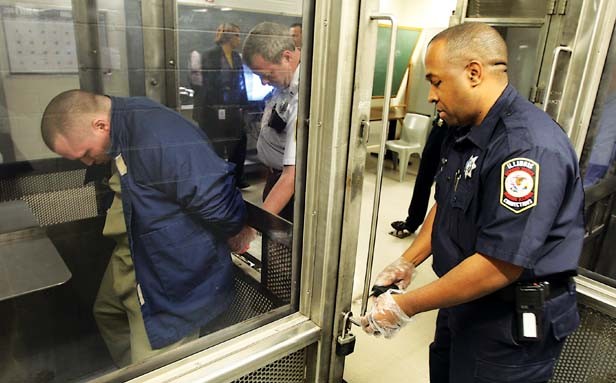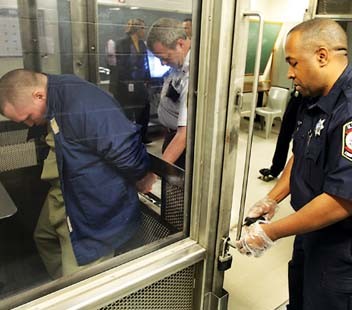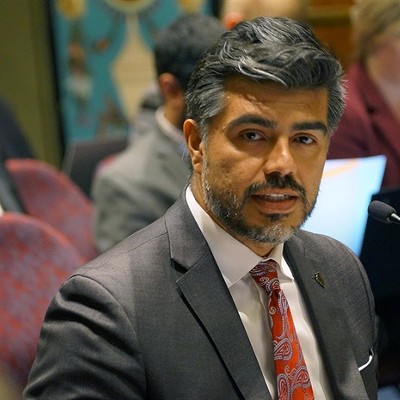
Gov. Pat Quinn is moving ahead with plans to close the state’s controversial “C-Max” prison at Tamms, Ill., despite a plan by state lawmakers to keep it open and convert it to a lower-security facility.
In February, Quinn announced plans to shutter the prison, which holds about 200 inmates in solitary confinement at an estimated cost of $61,522 per inmate each year. The average annual cost per inmate for incarceration at all state prisons is about $20,000. Tamms is well below its rated capacity of 700 inmates.
Before the end of the Illinois General Assembly’s spring session on March 31, lawmakers passed a budget bill that included $26.2 million for Tamms, with a decree that the money may be used for “expenses associated with repurposing the facility into a medium or minimum security facility.”
In May, the Commission on Government Forecasting and Accountability, an 11-member legislative panel, voted 7-3 in favor of keeping Tamms open. Its decision isn’t binding, however, and Quinn ultimately will make the final determination.
Asked to comment about the conflicting proposals, an IDOC spokesperson referred all questions to Quinn’s Office of Management and Budget (OMB), saying the issue is “a budget question.”
Kelly Kraft, OMB spokeswoman, said Quinn worked closely with the Department of Corrections in deciding to close Tamms, and the governor is moving forward with closure plans slated for August.
If the prison is indeed closed, inmates at Tamms who are currently held in solitary isolation for up to 23 hours a day would mostly be transferred to the prison at Pontiac and some to the prison at Menard, Kraft says. There, the inmates would be single-celled and placed in segregation units.
“While the environment of the facilities would obviously be different than Tamms, the policy and protocol regarding the restricted movement of the offenders and the way staff escorts and maintains order, would remain the same,” Kraft says. “These facilities are maximum-security prisons and are capable of supplying the level of security needed for these inmates without compromising safety and security. Tamms’ minimum-security inmates would be relocated appropriately to other facilities throughout the system.”
Prison reform advocate Laurie Jo Reynolds considers the move toward closure a major victory. She cites cases in which prisoners have become deeply mentally disturbed during long periods of isolation at Tamms. Reynolds is part of Tamms Year Ten, a group dedicated to closing the prison.
Reynolds says she hopes moving inmates from Tamms to Pontiac would mean the end of long-term solitary confinement in Illinois. The maximum-security prison at Pontiac already holds all inmates in single-cell segregation units, Reynolds says, so inmates transferred there from Tamms would likely be treated much the same as other inmates despite the increased security protocols.
“The substantial difference between Tamms and Pontiac is that Tamms was designed for sensory deprivation and isolation, and Pontiac was designed just to be a maximum-security prison, so the architecture is not as focused on preventing people from hearing and seeing the world around them,” Reynolds says. “It’s not as isolating, even though it is just as secure.”
The possible closure of Tamms comes as the federal government and the United Nations are taking a closer look at long-term solitary confinement. U.S. Sen. Dick Durbin, D-Ill., hosted a legislative hearing on June 19 in Washington, D.C., to examine the practice in federal and state prisons nationwide. Meanwhile, Juan Mendez, Special Rapporteur on torture for the United Nations, is considering a request from Tamms Year Ten to investigate whether the conditions at Tamms constitute torture.
Mendez told Illinois Times in an email that he is unsure whether or when an investigation of Tamms would take place.
“Depending on all the conditions, which vary widely, solitary confinement inflicts pain and suffering of such severity that it can amount to cruel, inhuman or degrading treatment and, in extreme cases, to torture,” Mendez said. “I cannot say if the solitary confinement applied in Tamms reaches that level or not.”
Contact Patrick Yeagle at [email protected].
















